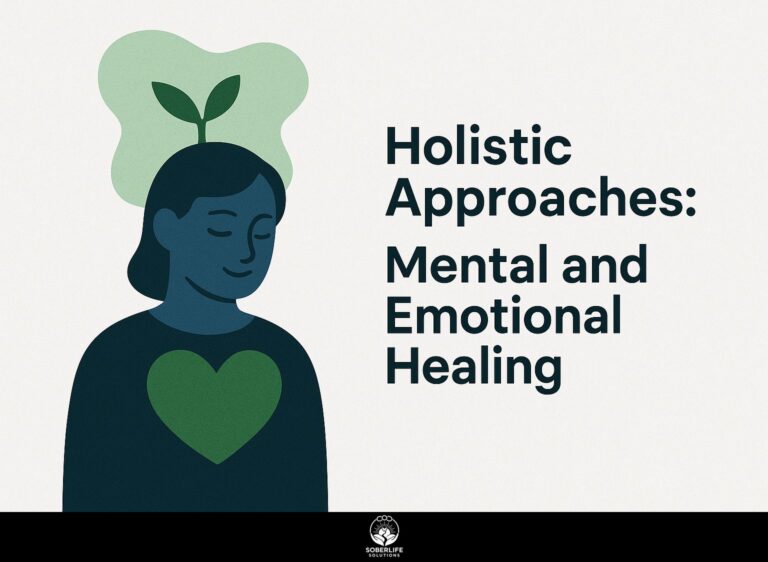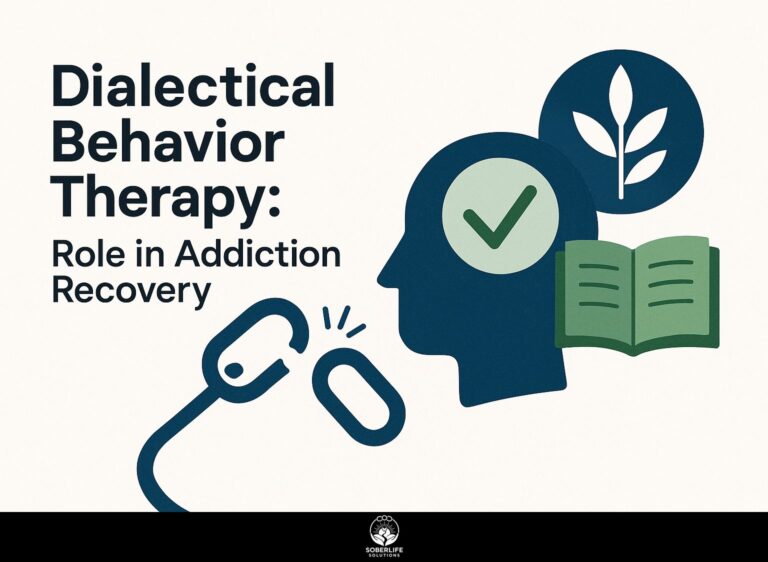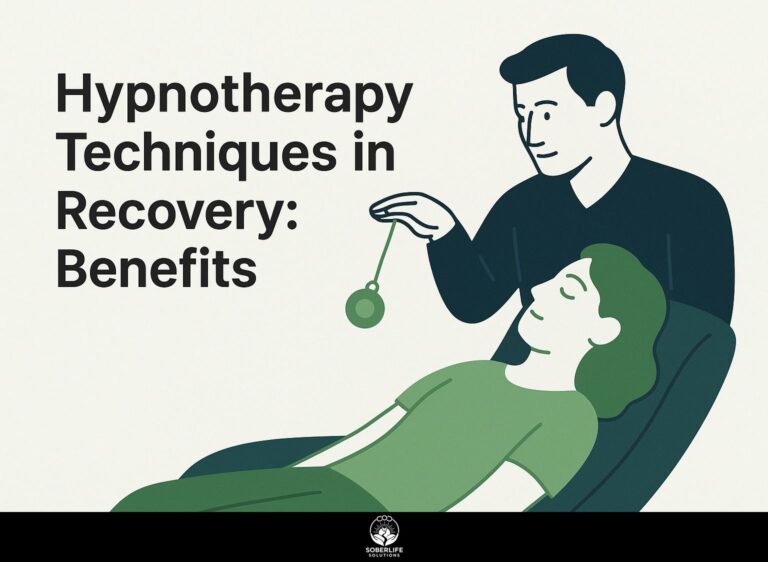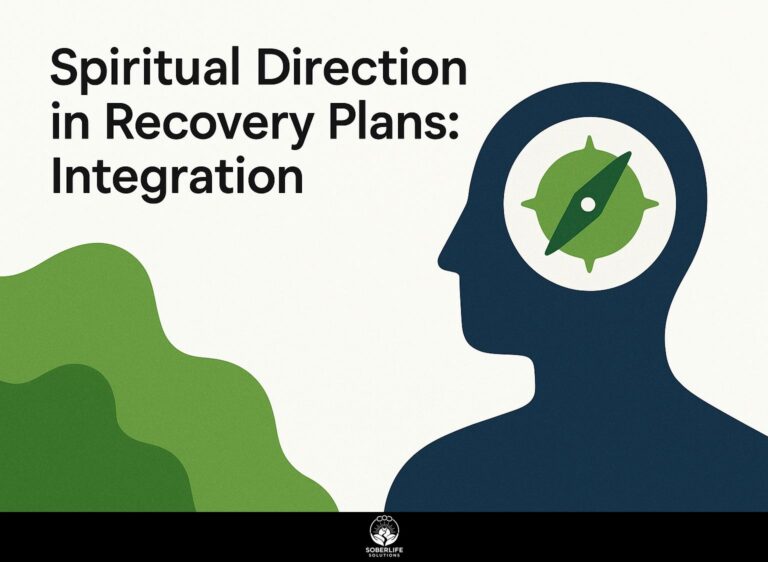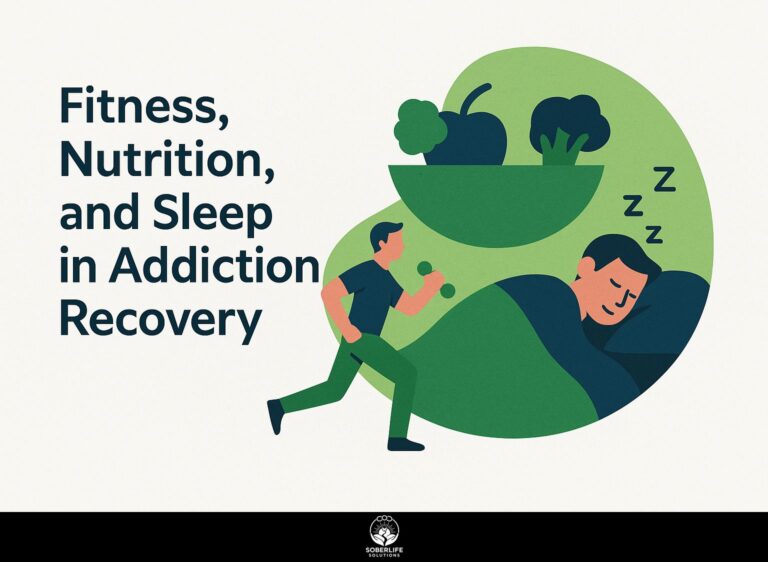Animal-Assisted Therapy in Alcoholism Recovery
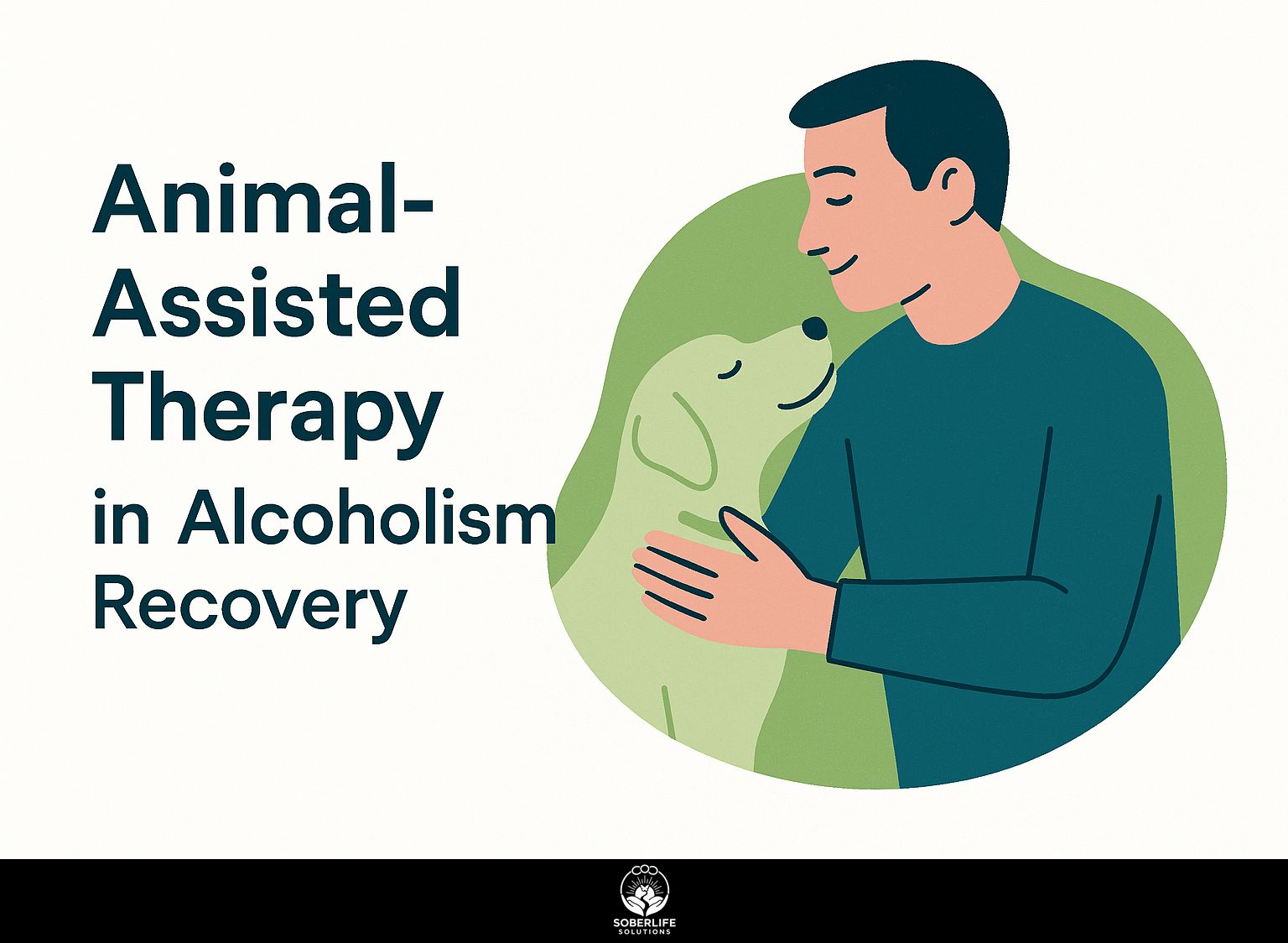
Animal-assisted therapy is changing how patients recover from alcoholism and substance abuse. This new method helps with emotional recovery and deals with the difficult situation where mental health problems happen alongside addiction. By looking at impulsiveness measures, we’ll see how therapy animals can greatly improve recovery results. Learn how animal-assisted therapy can help people recover from addiction and support lasting improvements.
Key Takeaways:
Definition and Overview
AAT is defined as a treatment method that integrates trained animals into traditional therapy sessions to aid in the treatment of mental health disorders.
Common therapy animals, such as dogs, cats, and rabbits, help improve emotional bonds. For instance, therapy dogs might provide comfort to individuals dealing with anxiety, while cats can help reduce feelings of loneliness.
These animals complement cognitive behavioral therapy by offering a non-judgmental presence that encourages openness and engagement.
Doing AAT involves collaborating with recognized therapy animal organizations, ensuring the animal’s behavior aligns with the therapy goals, which supports improving emotional control and self-control. For those interested in a comprehensive overview of these practices, this publication available on Amazon, “Animal-Assisted Counseling and Psychotherapy,” provides an in-depth exploration of the therapeutic benefits and methodologies associated with AAT.
Historical Context
Therapy involving animals began in the 1960s. At that time, researchers began recording how having animals around could help people recover from mental health issues.
In 1975, a major study carried out by the University of Valencia revealed that patients working with therapy animals experienced clear improvements in anxiety and depression. This foundational research led to broader acceptance within the therapeutic community.
By the 1990s, organizations like the Delta Society emerged, establishing guidelines and training for therapy animal teams.
The change finished in 2008 when the American Psychological Association officially recognized animal-assisted therapy as a legitimate approach, permitting its use in medical settings across various areas.
Benefits of Using Animals in Therapy for Recovery
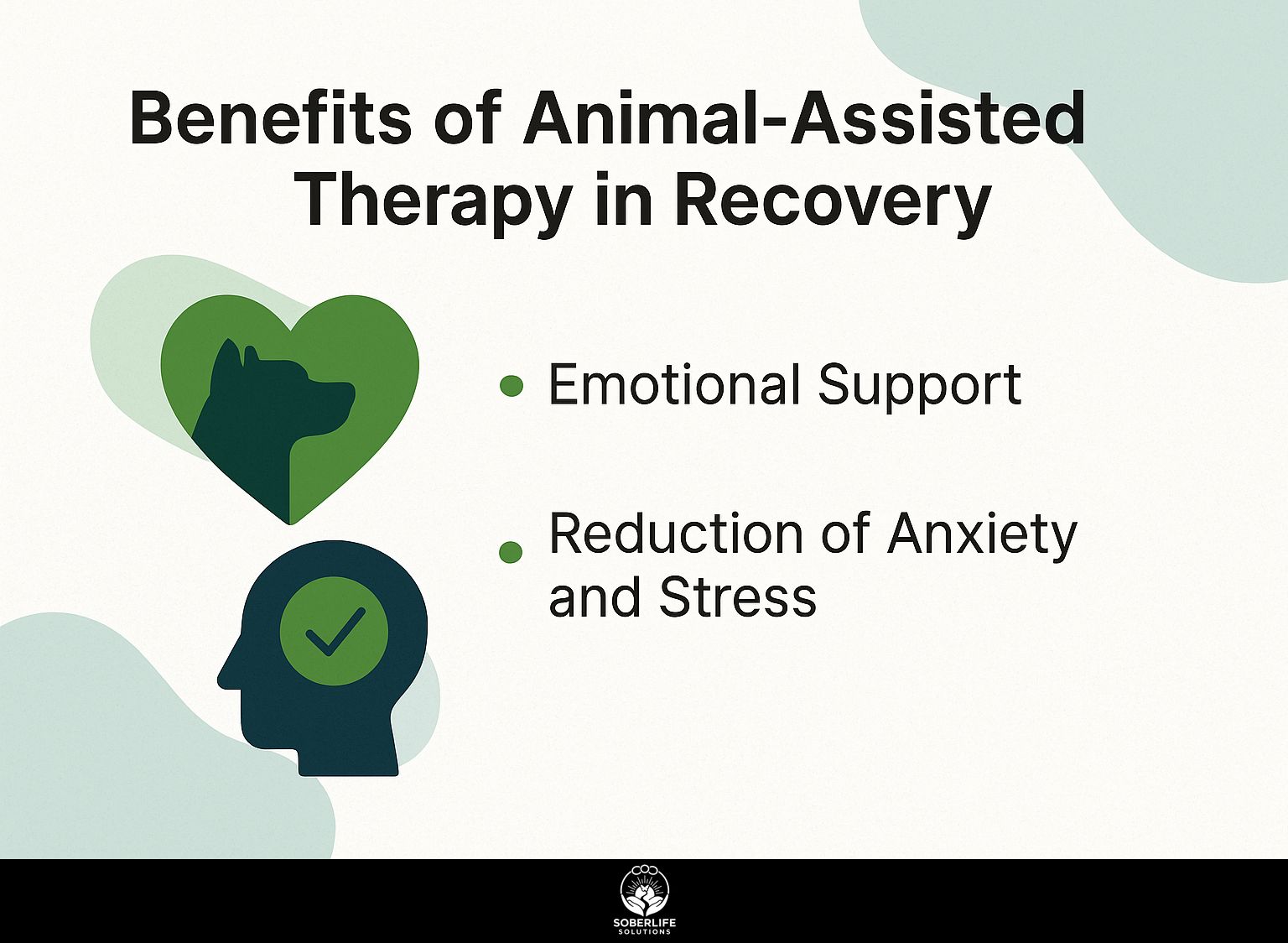
Therapy that involves animals helps patients recover by giving them emotional support and noticeably lowering anxiety and stress. For those interested in holistic approaches, it’s important to see how holistic therapy integrates various methods, including animal-assisted interventions, to enhance rehabilitation.
Emotional Support
Patients engaged in AAT report feeling a greater sense of emotional support, which can lead to improved therapy outcomes and patient involvement.
Therapy animals, such as dogs or cats, offer comfort and security, often facilitating deeper emotional connections during sessions. For example, a person with anxiety might feel comforted by petting a therapy dog, which can lower stress and encourage openness.
Techniques such as positive reinforcement create a relaxed atmosphere, encouraging patients to express themselves. Testimonials show that one patient found it easier to talk about their experiences when a therapy animal was present, which helped them better understand their emotions.
This highlights the integral role animals play in enhancing the therapeutic alliance.
Reduction of Anxiety and Stress
Studies have shown that AAT can reduce anxiety levels by up to 60% in patients undergoing therapy, creating a more relaxed therapeutic environment.
For instance, one study involving patients with schizophrenia demonstrated significant improvement in anxiety and social engagement when therapy included interactions with therapy dogs.
Tools like the Animal Assisted Therapy Assessment (AATA) can help therapists evaluate the effectiveness of these treatments, as supported by extensive research from ScienceDirect.
Regular sessions, such as weekly visits with trained therapy animals, can improve a patient’s ability to handle stress.
By combining AAT with traditional therapy methods, clinicians create a treatment plan that focuses on both mental health issues and their patients’ emotional health.
Types of Animals Used in Therapy
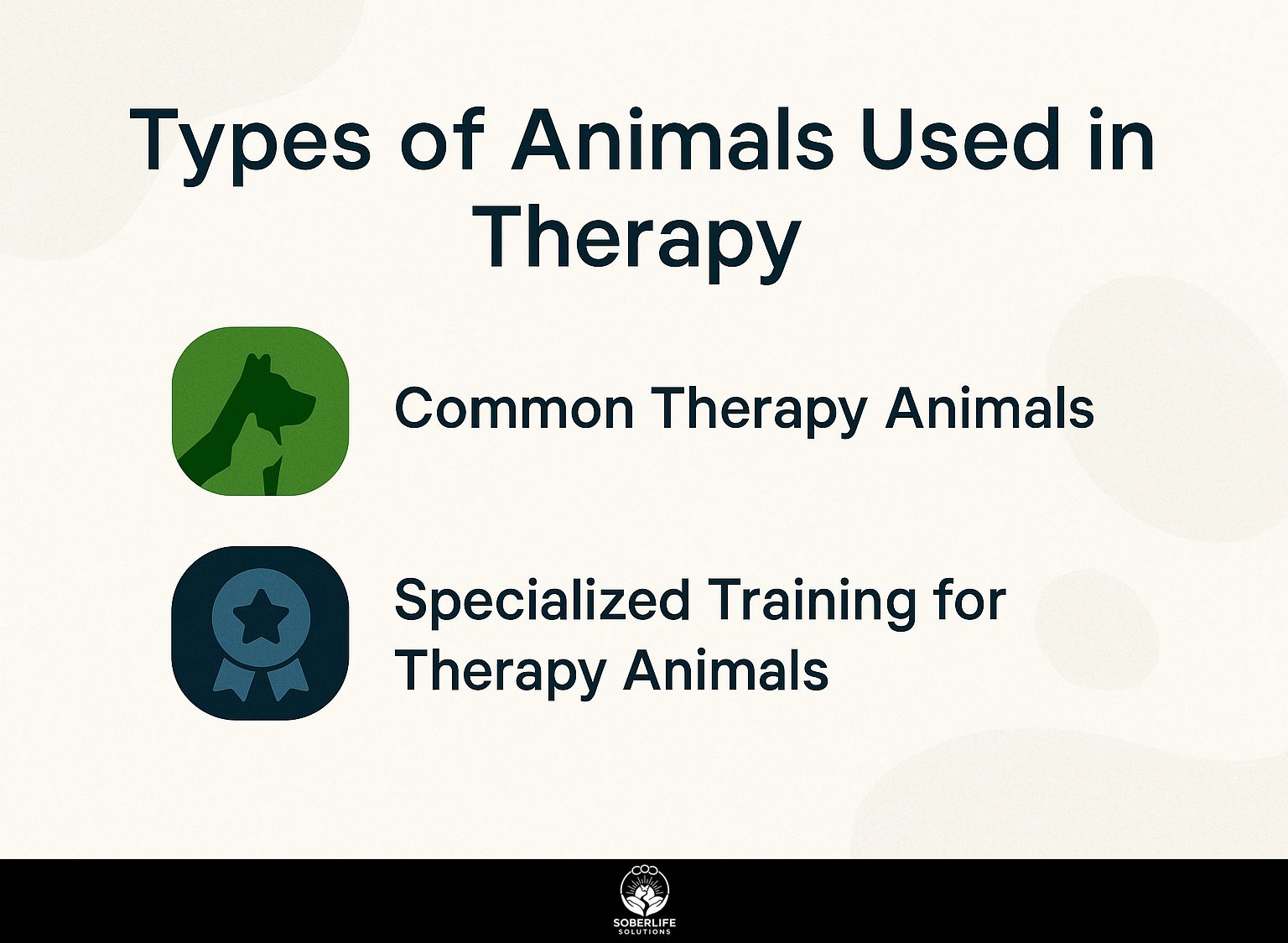
Different animals are used in therapy settings, each playing specific roles in treatment, from emotional support dogs to trained horses for equine therapy.
Common Therapy Animals
Dogs, horses, and even dolphins are among the most common therapy animals, each chosen for their unique abilities to connect with humans and aid in recovery.
Dogs are often used for their loyalty, offering comfort in places like hospitals and nursing homes. Studies indicate that patients experience reduced anxiety and pain levels during dog therapy sessions.
Horses are great for therapy, especially for people with PTSD. They teach people to build trust and handle their feelings through activities like horseback riding and looking after the horses.
Dolphins are not often used, but they are included in some water therapy sessions. They help with emotional and mental growth, especially for children with developmental challenges. Different types of animals help improve therapy results by creating emotional bonds.
Specialized Training for Therapy Animals
Therapy animals receive thorough training to make sure they can act correctly in therapeutic environments and help with emotional control.
Organizations like Pet Partners and Therapy Dogs International provide thorough training plans for therapy animals. These programs focus on teaching obedience, helping animals get along with others, and getting them used to various settings.
These programs often include a certification process that makes sure the animal can behave calmly and kindly with clients. During therapy sessions, well-trained animals can help reduce anxiety, promote social interaction, and provide comfort.
Expected results from these interactions usually involve better emotional health and improved communication abilities for those involved.
Mechanisms of Action
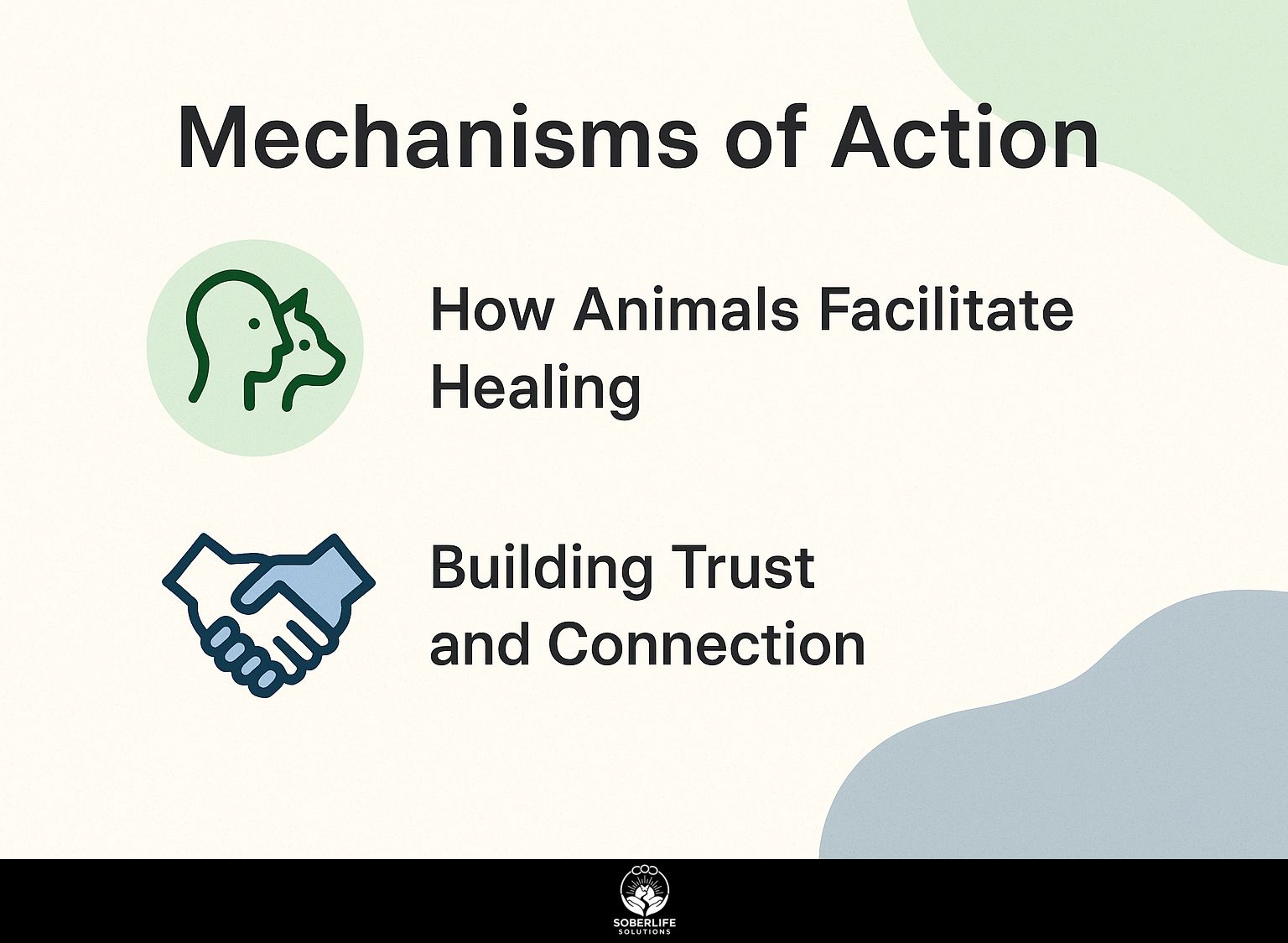
Studying how animals help with healing in therapy shows why they work well, especially in improving emotional bonds and therapy settings.
How Animals Facilitate Healing
Animals help people heal by offering companionship without judgment. This allows patients to feel safe to express their emotions during therapy.
Studies show that therapy with animals can greatly improve emotional expression.
For example, a study published in the Journal of Mental Health found that participants working with therapy dogs reported reduced anxiety and greater openness in discussing emotions.
This is particularly true for children with autism, who often form strong bonds with therapy animals, leading to improved social interactions.
Animals can help build a strong connection between patients and therapists. This relationship can make clients feel heard and valued, which supports their recovery.
Building Trust and Connection
The presence of therapy animals significantly aids in building trust between patients and therapists, enhancing the overall therapeutic community experience.
Therapists often use methods like supervised activities with animals, where patients carefully pet or feed the animals, creating feelings of security.
A helpful situation is when a therapist brings in a calm dog during the first sessions; as patients spend time with the dog, their anxiety decreases, which helps them talk more easily.
Another method is using animals in role-play exercises, which can reveal emotions in a non-threatening manner.
These interactions create a calming environment and encourage openness and connection, building a strong base for trust.
Case Studies and Research Findings
Many case studies and research findings show that therapy involving animals is effective in various therapy settings and for mental health problems.
Successful Implementations
Implementing AAT in different facilities has led to significant improvements in how patients participate and in their treatment results.
In a children’s hospital, therapy dogs like Golden Retrievers helped reduce anxiety in kids undergoing medical treatments, making them feel less pain.
In a senior care home, cats provided comfort, resulting in lower depression rates among residents over six months.
Programs for veterans have used trained horses to help build emotional bonds, showing a 40% reduction in PTSD symptoms in three months.
These diverse applications illustrate how AAT can cater to specific patient needs across different demographics, enhancing overall well-being.
Statistical Evidence of Effectiveness
Research shows that 75% of patients in AAT programs report improvements in mood and anxiety levels compared to traditional therapy alone.
A study in the Journal of Psychiatric Research found that patients who participated in therapy with animals showed a 30% drop in anxiety and a 40% improvement in well-being after six months.
Including therapy animals like dogs or horses helps with emotional healing and encourages social interactions important for recovery.
Clinics that use organized AAT protocols experience increased patient satisfaction and improved compliance, making it an effective component of mental health treatment plans. According to research published in ScienceDirect, these clinics benefit from improved patient outcomes and greater therapeutic engagement.
Challenges and Considerations
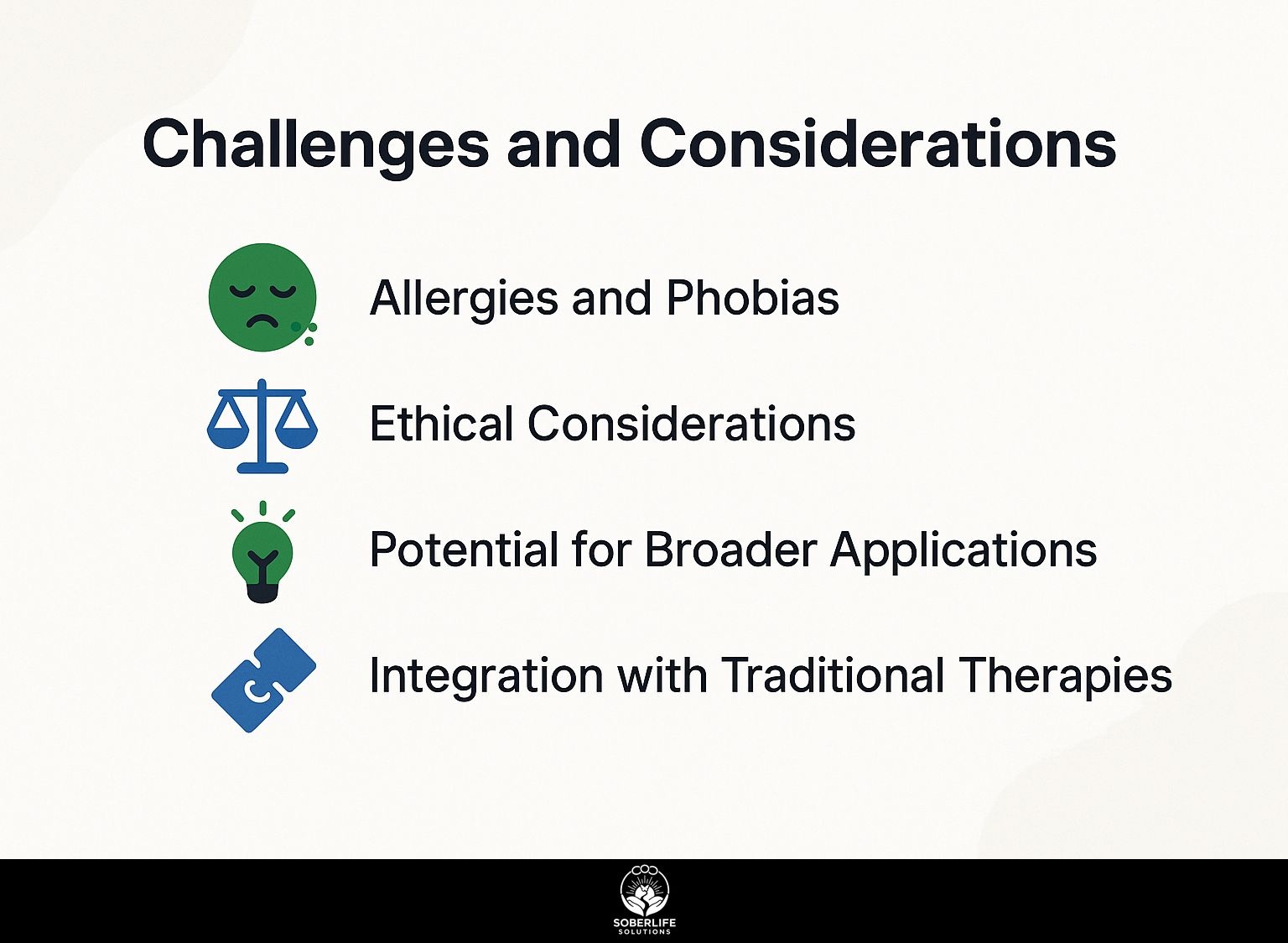
While therapy involving animals provides many advantages, there are also challenges and ethical issues that professionals need to address. To understand how holistic approaches can integrate with traditional methods, discover our complete strategy for topical authority in holistic therapy and its relevance in rehab settings.
Allergies and Phobias
Allergies and phobias related to therapy animals pose significant concerns for both patients and therapists in AAT environments.
To effectively manage these issues, start with thorough assessment protocols. Use pre-session questionnaires to identify any allergies or animal-related fears.
For patients with confirmed allergies, consider alternative interventions such as virtual reality exposure therapy or employing hypoallergenic animals like Poodles.
If a phobia arises during a session, calmly switch focus to a different technique, such as mindfulness or grounding exercises, ensuring the patient feels safe.
Offering options and adjusting the approach demonstrates responsiveness to individual needs while maintaining therapeutic effectiveness.
Ethical Considerations
Ethical considerations surrounding the use of therapy animals include ensuring patient welfare, animal rights, and the appropriateness of animal involvement in therapy.
To address these ethical challenges, practitioners should establish clear guidelines.
- Evaluate the suitability of the animal for therapy by considering their temperament and training. It’s important to make sure the animal feels at ease in the treatment area to avoid stress.
- Maintain open communication with clients to gauge their feelings about animal involvement.
- Regular monitoring of both patient responses and animal behaviors is essential.
- Adhere to local regulations and guidelines regarding therapy animal certification, which can differ by region, ensuring compliance and ethical practice.
Potential for Broader Applications
AAT’s potential for broader applications includes its use in schools, elderly care facilities, and rehabilitation centers, addressing mental health needs across demographics.
In schools, programs like MindUP have effectively used AAT to improve students’ control over their emotions and their social abilities, leading to better behavior in class.
Elderly care facilities, such as those using Pet Therapy, report decreased anxiety levels among residents, promoting a sense of companionship and reducing feelings of isolation.
Rehabilitation centers can adopt AAT by incorporating therapy animals into physical recovery sessions, encouraging movement and participation, leading to notable increases in patient morale.
These pilot programs demonstrate AAT’s versatility and effectiveness in diverse environments.
Integration with Traditional Therapies
Using AAT alongside standard therapies can improve treatment plans, providing well-rounded methods for mental health care and recovery.
For example, in a study with veterans, combining Animal-Assisted Therapy (AAT) and Cognitive Behavioral Therapy (CBT) resulted in stronger emotional connections and improved outcomes.
In another scenario, children with autism showed significant reductions in anxiety when AAT complemented speech therapy.
Practitioners can use tools such as pet therapy organizations to locate certified therapy animals and trainers, guaranteeing safe and effective interactions.
This method improves emotional recovery, helps patients build social skills, and decreases loneliness.
Frequently Asked Questions
What is Therapy with Animals in Alcoholism Recovery?
Animal-Assisted Therapy in Alcoholism Recovery is a form of treatment that involves animals in the care and healing process for people dealing with alcoholism. This therapy can involve a variety of animals, such as dogs, cats, horses, and even smaller animals like rabbits or birds.
How does therapy involving animals help people recover from alcoholism?
Animal-Assisted Therapy involves people in recovery spending time with animals in a safe and healing setting. This can help reduce stress and anxiety, improve mood, and provide a sense of companionship and support. These benefits can aid in the recovery process for individuals struggling with alcoholism.
Does Animal-Assisted Therapy work for people recovering from alcoholism?
Studies increasingly show that including animals in therapy can help people recover from alcoholism. Studies have shown that incorporating animals into therapy can improve overall well-being, reduce stress and anxiety, and increase a sense of social support, all of which can be beneficial in the recovery process.
Which animals are used in therapy to help people recover from alcoholism?
Animals used in Animal-Assisted Therapy for helping people recover from alcoholism can be different kinds, but the most often used are dogs, cats, horses, and smaller animals like rabbits or birds. The specific animal used will depend on the individual’s preferences and needs.
Are there any dangers linked to using animals in therapy for alcoholism recovery?
Although Animal-Assisted Therapy is usually seen as safe and helpful, it might have certain risks. These can include allergies, potential for animal bites or scratches, and potential triggers for individuals with a fear of animals. Talk to a therapist about any concerns before starting Animal-Assisted Therapy for alcoholism recovery.
Can therapy with animals be used together with other treatments for overcoming alcohol addiction?
Yes, Animal-Assisted Therapy can be combined with other therapy methods to help recover from alcoholism. It can be an additional method to traditional therapy and can be included in individual or group therapy sessions. It’s important to discuss with a therapist to determine the most effective treatment plan for each individual.

